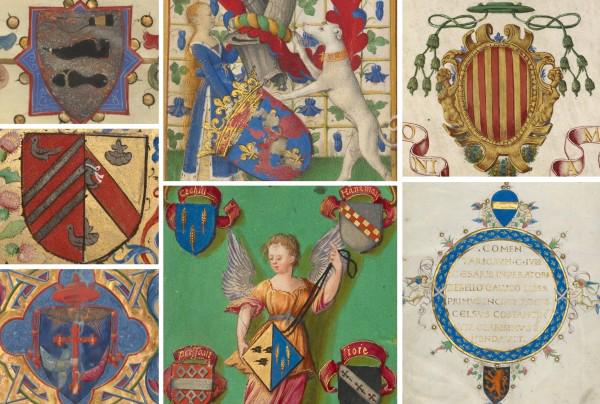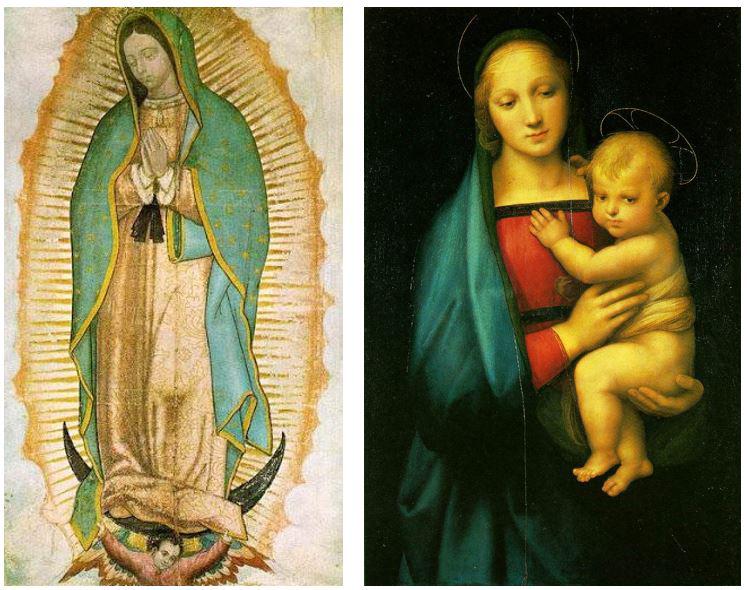Contextual Color Symbolism
Renaissance art uses color symbolism to convey meaning, often shifting based on context. Red could represent passion or sacrifice, while blue, made from costly lapis lazuli, adorned the Virgin Mary's garments as a symbol of divinity and wealth. Yellow captured contrasting emotions, from festivity to betrayal. Green represented both life and mischief. Black and white held their own significance, with black suggesting elegance or sin, and white symbolizing purity or eerie calm.
Colors in Renaissance art weren't just backdrops but active storytellers, bending to the will of human purpose and divine narrative. This intricate use of color set the Renaissance apart, creating visual symphonies that invited varied interpretations from viewers.
Common Color Symbols
In Renaissance art, colors took on specific roles and meanings:
- Red: Often symbolized courage, charity, or martyrdom. It could represent both divine ardor and everyday vitality.
- White: Typically associated with purity, used for angelic beings or the Virgin Mary. It could also create contrast against darker themes.
- Green: Represented renewal and vibrancy, often used in landscapes to bridge earthly and heavenly realms. It could also symbolize hope, youth, or envy.
- Blue: Reserved for respected figures, especially Mary. Made from expensive lapis lazuli, it conveyed both divine grace and worldly prestige.
These colors transcended their physical properties, becoming powerful narrative devices that allowed viewers to connect with divine concepts through visual means.
The Economics of Color
The use of color in Renaissance art was deeply tied to economics. Lapis lazuli, used for ultramarine blue, was incredibly expensive, rivaling the cost of gold. Its use, particularly in depictions of the Virgin Mary, signified both spiritual importance and economic status.
Other costly pigments included vermilion red from cinnabar and deep greens from verdigris. Artists used these sparingly, reserving them for significant elements in their compositions. The presence of these expensive colors in an artwork spoke to the wealth of the patron and the importance of the piece.
Each color choice was a financial decision, creating a visual hierarchy that viewers of the time could interpret. This interplay between artistry and economy added layers of meaning to Renaissance works, speaking volumes about the social and religious context in which they were created.
Symbolism Beyond Colors
While colors played a crucial role in Renaissance art, other symbols enriched the narratives:
- Animals: The serpent represented temptation and evil, while the swan symbolized purity and love.
- Flowers: Each bloom carried specific meanings. For example, carnations could represent love or innocence, while lilies often symbolized purity.
- Objects: Mirrors reflected themes of clarity or vanity, while chalices evoked sacred ceremonies and sacrifice.
These symbols worked in harmony with color symbolism to create complex, layered narratives. They invited viewers to interpret and reflect on the deeper meanings within the artworks, blending spiritual and human experiences in rich visual stories.

Religious and Allegorical Symbolism
Renaissance art served as a visual dialogue of spiritual concepts, guided by Church teachings. Colors and symbols were carefully chosen to illustrate biblical stories and doctrines:
- Red in Christ's robe symbolized both sacrifice and divine love.
- Blue, especially in depictions of Mary, represented heavenly grace and exalted status.
- Yellow could represent betrayal, as in scenes with Judas.
These artworks functioned as visual sermons, educating illiterate congregations about religious stories and concepts. The Church's influence extended beyond subject matter to the very pigments used, with each color choice carrying theological significance.
Renaissance masterpieces thus became windows to the divine, using color and symbolism to create a visual liturgy that resonated with viewers on both spiritual and emotional levels.

In Renaissance art, colors and symbols work together to tell stories that speak to both divine and human experiences. This rich interplay invites us to consider the layers of meaning in each artwork, connecting us to narratives that still resonate today.
- Stemp R. The Secret Language of the Renaissance: Decoding the Hidden Symbolism of Italian Art. Duncan Baird Publishers; 2006.
- Cennini C. Il libro dell'arte. 15th century.






















